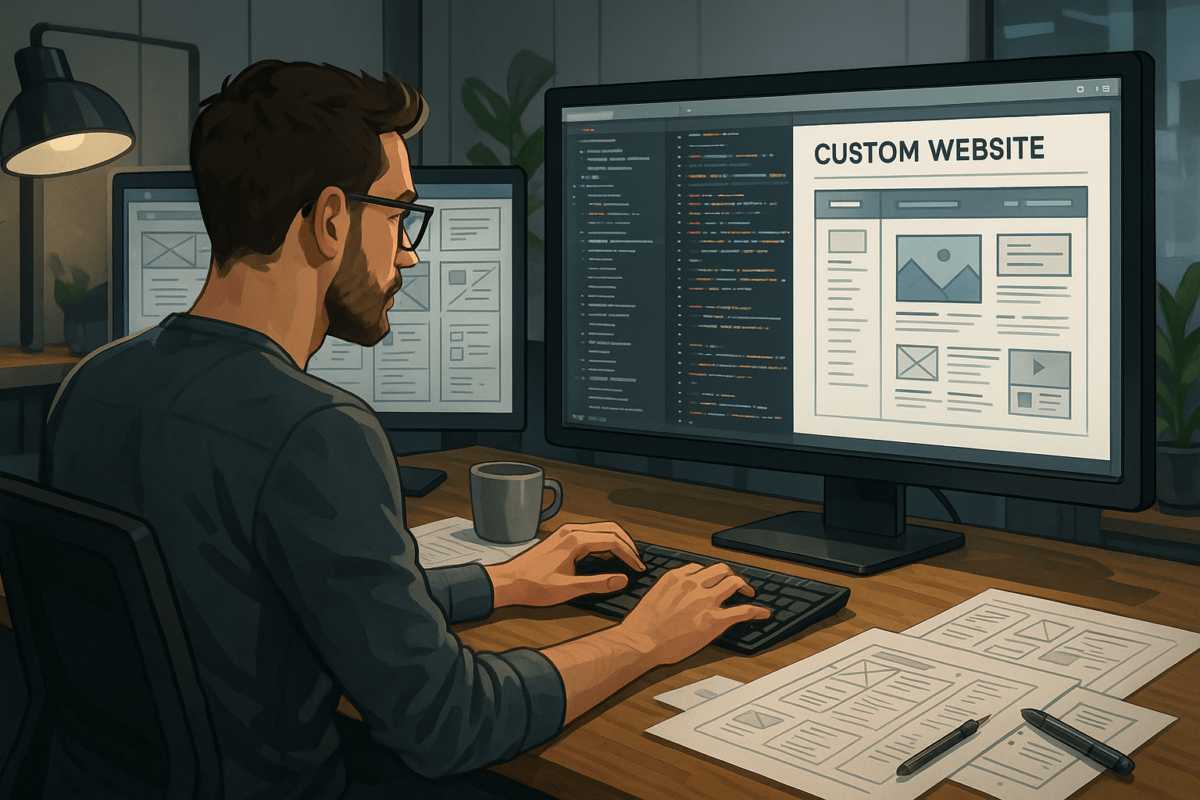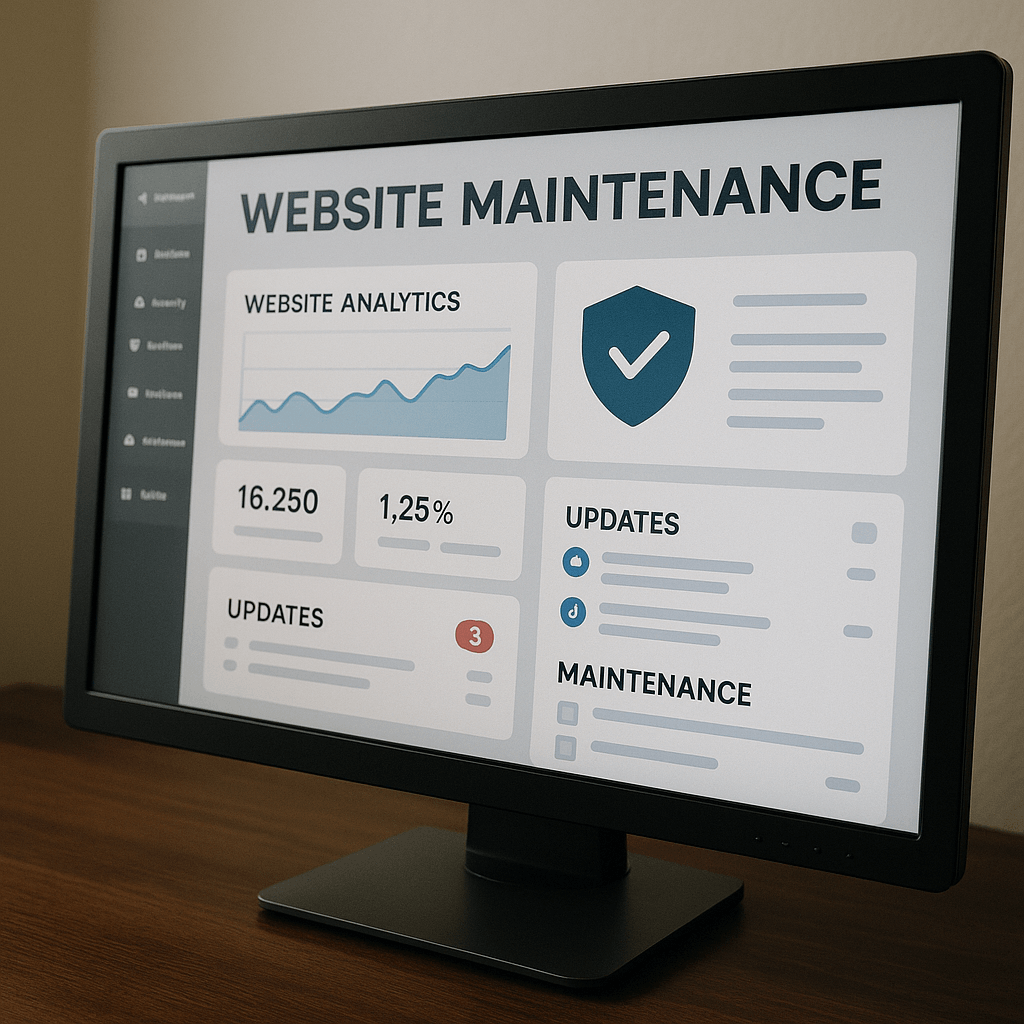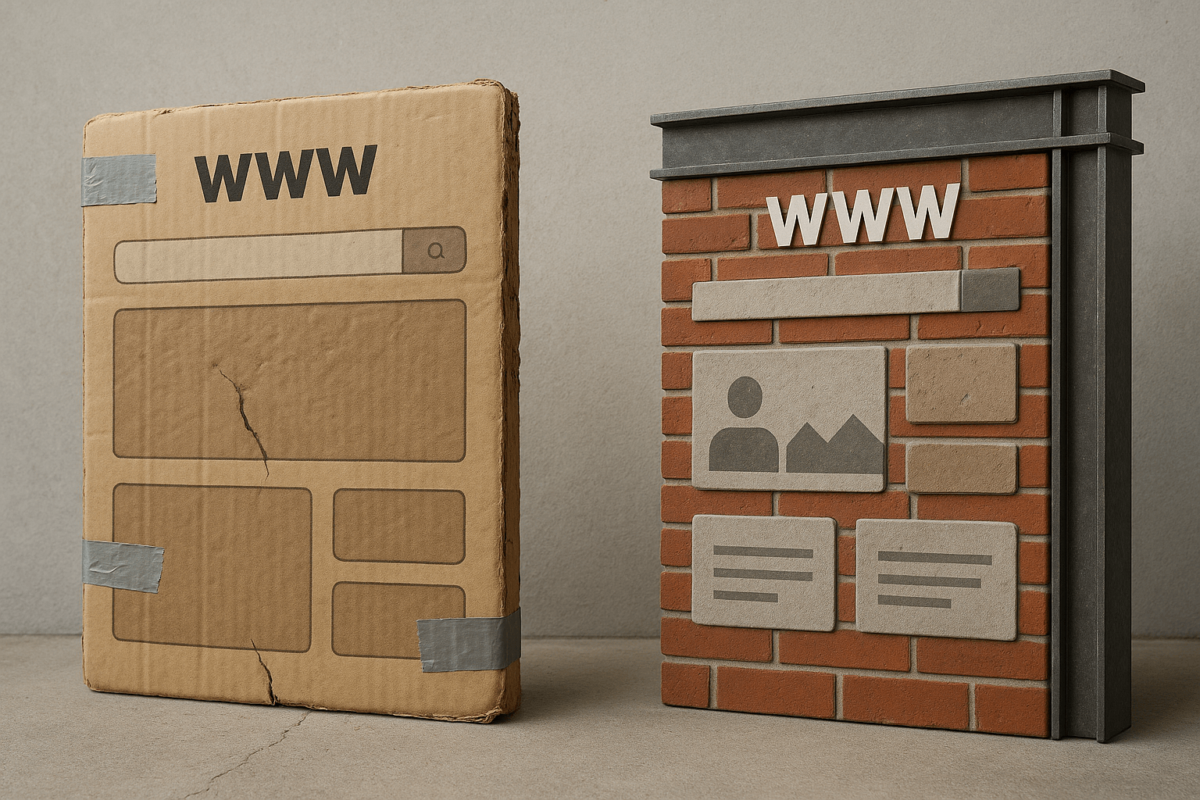Top red flags when hiring web designer are poor communication, lack of a clear portfolio, unclear pricing, and unwillingness to provide a contract or timeline. These can indicate inexperience or unprofessionalism that may lead to project delays or low-quality results.
When it comes to hiring a web designer, the stakes are high. Your website is often the first impression potential customers have of your brand, making it crucial to find someone who can create a professional online presence.
However, navigating the hiring process can be tricky, and there are several red flags to watch for when hiring a web designer. In this article, we will explore these warning signs, how to identify them, and what steps to take to ensure you hire the right designer for your business needs.
This article is a part of the series of Ultimate Guide to Hiring a Web Designer for Your Small Business Website in 2025.

What Are the Key Red Flags to Watch When Hiring a Web Designer?
How Can You Identify a Designer’s Red Flags?
Identifying a designer’s red flags involves careful observation during the hiring process. Start by assessing their communication style. If a web designer is unable to articulate their design process clearly or seems evasive when answering your questions, this could be a warning sign of poor communication skills.
Additionally, look for inconsistencies in their portfolio. A strong designer should have a cohesive body of work that aligns with your brand strategy. If their portfolio appears disorganized or lacks variety, this may indicate a lack of experience or creativity.
What Common Red Flags Should You Be Wary Of?
There are several common red flags when hiring a web designer that you should be wary of. One such flag is a lack of a clear project timeline. If a designer cannot provide a realistic timeframe for project completion, this could lead to delays and unmet expectations down the line.
Another red flag is the absence of a detailed contract outlining deliverables and payment terms. A professional web designer should be upfront about their process and the specifics of what you can expect.
Furthermore, be cautious of designers who do not consider search engine optimization (SEO) as part of their web design strategy. In today’s digital marketing landscape, a website that is not optimized for search engines will struggle to grow your business and reach your target audience.
Why Is It Important to Recognize These Red Flags?
Recognizing red flags when hiring a web designer is essential for several reasons. Firstly, it helps you avoid common mistakes that could lead to a poor return on investment (ROI). A website that does not meet your business objectives or resonate with your customer base can result in wasted time and resources.
Secondly, understanding these warning signs enables you to make informed decisions during the hiring process. By being vigilant and proactive, you can find the right designer who aligns with your vision and can effectively communicate their approach to web design. Ultimately, recognizing red flags can save you from the frustration of a failed project and ensure your online presence reflects your brand accurately.
Personally, since I have experience in this field, I can easily identify some red flags when it comes to hiring a web designer – such as unprofessional portfolio, poor communication, mismanagement and more. Therefore, my main advice is to trust your instincts. If something doesn’t feel right or seems off, just take your time to think it through or discuss your concerns with the web designer in order to make sure everything is in order and the person is reliable to work with.
How Do You Find the Right Web Designer for Your Business?
What Questions to Ask During the Hiring Process?
Asking the right questions during the hiring process is crucial to finding someone who can meet your specific needs. Start by inquiring about their experience with projects similar to yours. Questions like, “Can you provide examples of websites you have designed for businesses in my industry?” can help you gauge their expertise.
Additionally, ask about their approach to web design and how they incorporate your business goals into their work. Questions regarding their process for ensuring a responsive design and how they handle SEO should also be included. Understanding how they plan to optimize your website for search engines will be vital for your online success.
From my own experience, here are a few major points I recommend you to cover during the hiring process before making your final decision:
- Ask for the designer’s portfolio.
- Ask for testimonials from previous clients.
- Ask what kind of tools and platforms the designers usually works with.
- Ask for a clear timeline and contract.
- Ask how the designer handle revisions and feedback.
- Ask if the designer provides ongoing support or maintenance after launch.
How to Vet Potential Designers Effectively?
Vetting potential designers effectively involves a combination of research and direct communication. Start by reviewing their portfolio thoroughly. Look for diversity in their work, paying attention to design elements, functionality, and user experience. Reach out to previous clients for testimonials or references; their feedback can provide insight into the designer’s reliability and professionalism.
Furthermore, consider conducting interviews with multiple candidates to compare their responses and gauge their level of enthusiasm for your project. A good designer will not only be skilled but also passionate about helping you achieve your business objectives.
What Should You Look for in a Designer’s Portfolio?
When evaluating a designer’s portfolio, focus on several key aspects. First, assess the overall quality of their work. Look for clean, modern designs that reflect current web design trends. Additionally, pay attention to the usability of the websites; they should be easy to navigate and responsive across devices. A well-rounded portfolio will also demonstrate the designer’s ability to adapt their style to different brands and audiences.
Finally, check if the websites are optimized for SEO, as this is crucial for increasing visibility in search engine results. A strong portfolio will not only showcase aesthetic appeal but also functional effectiveness, which is essential for every business.
Personally, I always look at the way the portfolio is organized. Very ofter, this shows how much a web designer relies on visual elements in their work, which is especially important in web design. Another important point is the information provided in portfolio – the clearer and more concise it is, the better. Lastly, pay attention to the variety of work and the presence of versatility in style as well as in function.

What Are the Most Common Red Flags When Hiring a Web Designer?
How to Spot Unclear Communication as a Red Flag?
Unclear communication is one of the most significant red flags when hiring a web designer. If a designer struggles to explain their process or seems hesitant to answer your questions, this may indicate potential issues in collaboration.
Effective communication is paramount in ensuring that your vision is understood and executed correctly. During initial discussions, take note of how well the designer articulates their ideas and responds to your inquiries. If they do not demonstrate clarity in communication, it could lead to misunderstandings and dissatisfaction later on in the project.
I once had a case where, during the conversation, the web designer was clearly avoiding some of my questions without providing clear answers, which already was a red flag for me. So, if there is a lack of clear communication, I suggest looking for other options.
Why Should You Be Cautious of Unrealistic Timelines?
Unrealistic timelines are another red flag that should not be ignored. If a designer promises to deliver a fully functional website in an unreasonably short timeframe, this could indicate a lack of experience or a willingness to cut corners. Quality web design takes time, and a professional designer should provide a timeline that reflects the complexity of your project and allows for revisions.
Be wary of anyone who guarantees quick results without a thorough understanding of your requirements. Setting a reasonable timeframe is essential for ensuring that the final product aligns with your business goals and meets your expectations.
How to Evaluate a Designer’s Understanding of Your Business Goals?
Evaluating a designer’s understanding of your business goals is crucial in ensuring they can create a website that effectively represents your brand. During the hiring process, ask them how they plan to incorporate your objectives into the design. A good designer will take the time to understand your target audience and the specific challenges your business faces.
They should also demonstrate an awareness of your brand strategy and how it translates into web design. If a designer seems disconnected from your vision or does not ask probing questions about your business, it may be a sign that they are not the right fit for your project.
I suggest that after you hire a web designer, it is essential to ensure both of you are aiming toward the same goal. For that, it is important to communicate clearly before and during the working process. This will not only help discuss small details during the process but also guarentee the receipt of high-quality work in the end.

How Can You Ensure the Designer Explains Their Process Clearly?
What Should a Good Designer Include in Their Process Explanation?
A good designer should provide a comprehensive explanation of their design process. This includes outlining the steps they will take from the initial consultation to the final launch of the website. They should detail how they gather information about your brand, create wireframes, and incorporate feedback during the design phase.
Additionally, they should explain how they will ensure the website is responsive and optimized for SEO. Clarity in their process will help you understand what to expect and how they plan to deliver the final product.
How to Assess a Designer’s Approach to SEO and Responsiveness?
Assessing a designer’s approach to SEO and responsiveness is vital for the success of your website. Inquire about the specific SEO strategies they plan to implement, such as keyword optimization and meta descriptions. A designer who prioritizes SEO will understand its importance in driving traffic and improving your website’s visibility.
Furthermore, discuss their process for ensuring the website is responsive across different devices. A professional web designer should be able to demonstrate how they create a seamless user experience, regardless of screen size. Their ability to address these aspects will significantly impact your website’s effectiveness in reaching your target audience.
Why Is Transparency in the Design Process Important?
Transparency in the design process is critical for building trust between you and the designer. When a designer is open about their methods, timelines, and potential challenges, it fosters a collaborative environment. Transparency allows you to feel confident that your project is in capable hands and that the designer is committed to achieving your business objectives.
Moreover, it ensures that you are both on the same page regarding expectations and deliverables. This clarity can prevent misunderstandings and ensure that the final product aligns with your vision, ultimately contributing to a successful partnership.
What Are the Deliverables You Should Expect from a Web Designer?
How to Define Clear Deliverables in Your Contract?
Defining clear deliverables in your contract is essential for a successful project outcome. Your contract should outline specific items that the designer will provide, such as wireframes, design mockups, and the final website files. Additionally, it should include timelines for each deliverable, payment terms, and any revisions that are included in the scope of work.
By establishing clear expectations upfront, you can avoid confusion and ensure that the designer understands your objectives. This clarity will also serve as a reference point throughout the project, helping to keep everything on track.
What Timeline Should You Expect for Website Design Deliverables?
The timeline for website design deliverables can vary significantly based on the complexity of the project. However, a professional designer should provide a realistic timeframe that accounts for each phase of the design process. Typically, you can expect an initial consultation, followed by wireframe creation, design mockups, and the final development phase.
Each of these stages should be allocated sufficient time to allow for feedback and revisions. Be sure to discuss the timeline during the hiring process to ensure that it aligns with your business goals and any upcoming marketing initiatives.
How to Ensure Deliverables Align with Your Business Objectives?
Ensuring that deliverables align with your business objectives requires ongoing communication and collaboration with your designer. Regular check-ins and feedback sessions are essential for keeping the project on track. During these discussions, reiterate your business goals and how you envision the website supporting them. A good designer will be receptive to your input and willing to make adjustments as necessary.
Additionally, reviewing deliverables against your initial objectives will help you gauge whether the project is progressing as planned. This proactive approach can help ensure that the final product effectively represents your brand and meets your expectations.


